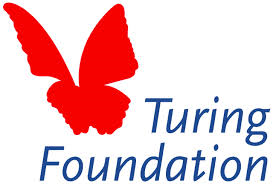
Full project title:
Use of handheld ultrasound for the early detection of leprosy and evaluation of its value as compared to existing diagnostic tests.
Project coordination
Hope Rises International
Partners
Nireekshana ACET (AIDS Care, Education and Training)
Lalgadh Leprosy Hospital & Services Centre
Aim: This study aims to explore the utility of Philips Lumify, a handheld point-of-care ultrasonography device, with a high-resolution probe to detect changes in the nerve affected by leprosy.
Project summary
The lack of feeling in one's hands or feet common to leprosy is due to nerve damage and this is one of the major complications leading to permanent nerve function impairment and disability in leprosy. Clinical examination includes physical palpitation of nerves (clinicians feeling the patients nerves with their fingers), which is a subjective assessment and does not provide reliable results. Ultrasonography of the peripheral nerve is a dependable alternative diagnostic technique that can precisely measure the thickness of the nerves. Several research studies demonstrated the utility of ultrasonography to detect thickened nerves in leprosy in comparison to healthy nerves and a statistically significant difference was noted in the thickness (cross-sectional area of the nerve). Further, color doppler and other features of the ultrasound device enabled detection of structural changes on the surface of the nerve and changes in blood flow which is a feature of nerve inflammation (neuritis).
Ultrasonography is able to reliably detect nerve changes in leprosy. However, this technique is confined to specialized centers and radiology units far from the sites where patients seek care. With the advent of high-resolution ultrasonography, more accurate results related to nerve changes can be captured. In the last decade, several companies produced handheld and point-of-care ultrasonography devices that are capable of capturing high resolution images at the bedside of the patients or even in the field settings.
This study will explore the utility of Philips Lumify, a handheld point-of-care ultrasonography device with a high-resolution probe to detect changes in the nerve affected by leprosy. Firstly, the images and measurements from this device will be compared with the standalone device to determine accuracy. Later the same device will be used to detect nerve changes in individuals with suspect signs of leprosy. Finally, the measurements of this device will be compared with clinical and laboratory results to see if they correlate. This Philips Lumify can be used with a mobile phone app or an android tablet. This technology is promising and can be a non-invasive and an easy diagnostic tool to detect the onset of neuritis/neuropathy in leprosy or leprosy per se. This device can be used for both early and confirmatory diagnosis of leprosy. If successful, this will decrease the length of time it takes to get a diagnosis, increase access to MDT and health care, and ultimately prevent stigma and life-long disability.
